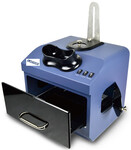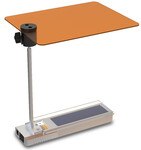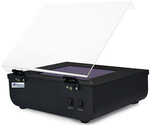
Gel Electrophoresis
Gel Electrophoresis is a laboratory method that is majorly used to separate the mixtures of DNA, RNA, or proteins according to molecular size. In this method, the molecules are separated by an electrical field through a gel that contains small pores. The molecules pass through the pores in the gel at a speed inversely proportional to their lengths. Therefore small DNA or RNA molecules travel more distance than the larger molecule through the gel. The gel consists of a permeable matrix and an electric current is passed through it, hence one end of the gel has a positive charge and the other end has a negative charge. DNA or RNA molecules migrate toward the positively charged electrodes. Dyes, fluorescent tags, or radioactive labels enable the DNA in the gel to identify even after they have been separated. They will appear as bands on the gel. A DNA marker with fragments of known lengths travels through the gel along with the sample. The approximate length of the DNA fragments in the samples is determined by comparing the bands of the DNA samples with the bands of the DNA marker. Proteins are not negatively charged, hence they are mixed with sodium dodecyl sulfate which coats them with a negative charge and unfolds them into a linear shape. After applying an electrical field proteins migrate to the positive end of the gel and get separated. The bands representing molecules of different sizes can be detected.
Download Catalog#
Note: To download a single product catalog please goto the product page and download catalog
Download Manuals#












